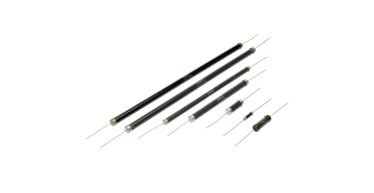The Fundamentals of Ceramic Power Resistors
Ceramic resistors stand out in the realm of electronic components for their versatility, reliability, and wide-ranging applications. However, selecting the right ceramic resistor for a specific engineering application involves careful consideration of several critical factors. In this comprehensive guide, we'll delve into what engineers need to know when choosing ceramic resistors to ensure optimal performance and reliability in their designs.
What Engineers Need to Know When Choosing Ceramic Resistors
Understanding Application Requirements
Before diving into resistor selection, engineers must thoroughly understand the requirements of their application. Factors such as power dissipation, operating voltage, temperature range, and environmental conditions significantly influence the choice of ceramic resistor. Ceramic resistors are excellent choices for high energy applications or designs that need pulse withstanding capabilities.
Power Rating and Size
The power rating of the ceramic resistor should exceed the maximum power dissipation expected in the application to prevent overheating and ensure reliability. Consider the physical size and mounting options of the resistor to ensure compatibility with the circuit layout and available space constraints.
Resistance Value and Tolerance
Select a ceramic resistor with the appropriate resistance value to achieve the desired voltage drop or current limitation in the circuit. Tolerance specifies the maximum allowable deviation of the resistor's actual resistance from the specified nominal value. Choose a tolerance that aligns with the precision requirements of the application. Certain ceramic resistors are not available in tight tolerances, so that is a factor engineers must consider when deciding on whether or not to use them in their design.
Temperature Coefficient of Resistance (TCR)
TCR indicates how the resistance of the ceramic resistor changes with temperature. For applications where temperature stability is critical, select resistors with low TCR values to minimize resistance drift over temperature variations. Ceramic resistors generally do not have low TCR values, but their other positive qualities make up for this. But if an application or design needs a low TCR, then another type of resistor may be preferable.
Environmental Considerations
Assess the operating environment of the application, including temperature, humidity, vibration, and shock. Choose ceramic resistors with appropriate environmental ratings and robust construction to withstand the specified conditions and ensure long-term reliability.
Special Features and Customization Options
Some applications may require specialized features such as high pulse power handling, non-inductive construction, or flame-resistant coatings. Explore customization options offered by manufacturers to tailor ceramic resistors to the unique requirements of your application.
By meticulously evaluating these factors and understanding the intricacies of ceramic resistor selection, engineers can confidently choose the most suitable components for their applications. Whether it's precision instrumentation, power electronics, or automotive systems, the right ceramic resistor plays a pivotal role in achieving optimal performance and reliability in electronic designs.

Types of Ceramic Resistors
Ceramic resistors, known for their robustness, stability, and wide range of applications, are essential components in electronic circuits across industries. Call now!
Read More
Common Resistor Terminology - Power Resistor Glossary
In this blog post, we'll unravel the mystery by exploring common resistor terminology and explaining what each term means.Call now and request a quote!
Read More